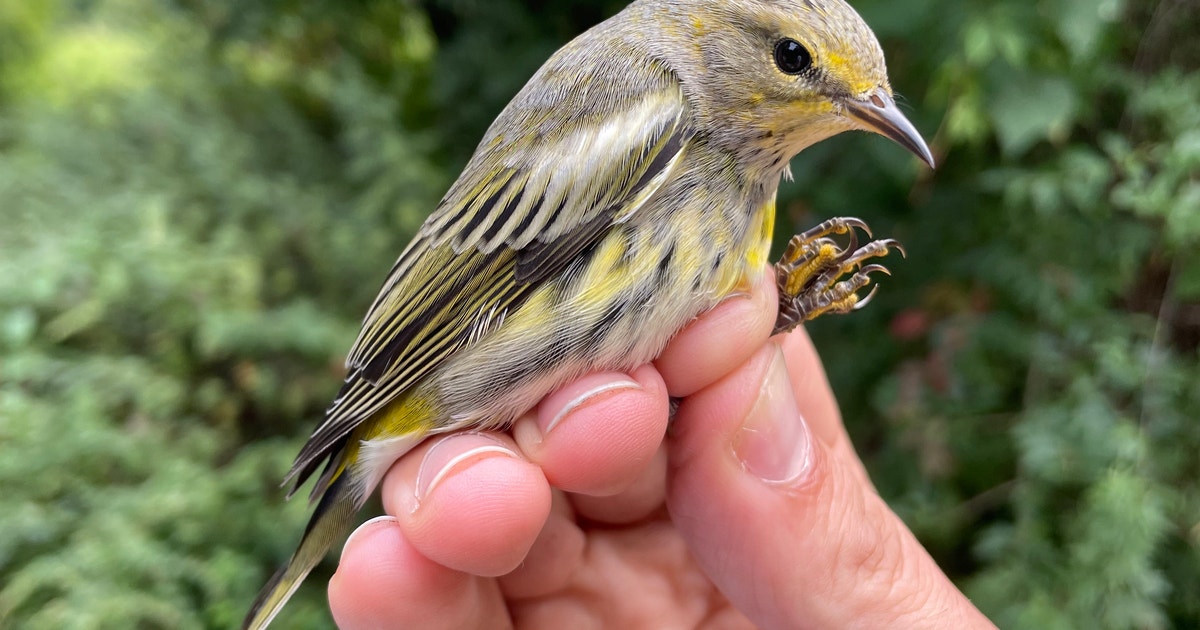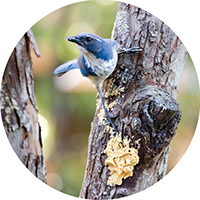Cape May Warblers (Setophaga tigrina) are a boreal bird species in the wood-warbler family that have more than 80% of their breeding range in Canada including in places like the Moose Cree First Nation’s proposed North French River Watershed Indigenous Protected Area. In Southwestern Pennsylvania, where Bird Lab runs three bird banding stations in spring and fall, they are common passage migrants. In other words, they don’t breed in this region but rather pass through it during migration from their breeding grounds in the Boreal Forest to their wintering homes in the Caribbean. Because we recaptured this banded Cape May Warbler, the story about this individual bird deepens. The data that we collect is repeated, allowing us to track subtle yet significant changes over time.
Two weeks went by before we recaptured this individual! Although the duration of stopover time may vary among individuals and is influenced by other environmental factors, the habitat here seems to be suitable, as evidenced by the bird’s weight gain of 4 grams, roughly equivalent to the weight of a nickel. Considering that these birds typically have a lean mass of 10g, this increase is remarkable. And likely means the bird will be migrating very soon.
Information like this helps us better understand how much a given habitat is able to provide food resources for birds during their migratory journeys. Since migration is so energy-intensive, finding stopover locations where food is abundant is critical for these birds’ survival.
All bird banding is conducted under State and Federal permits by highly trained individuals for research purposes. Data is collected efficiently and birds are released unharmed.



